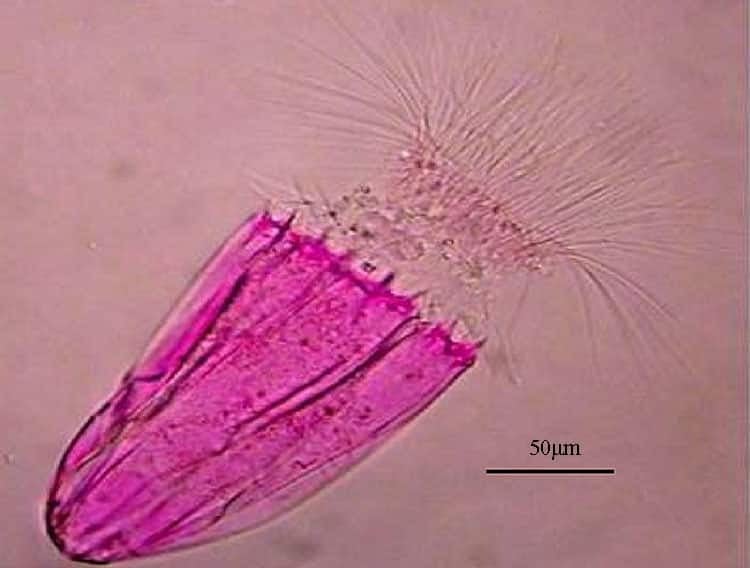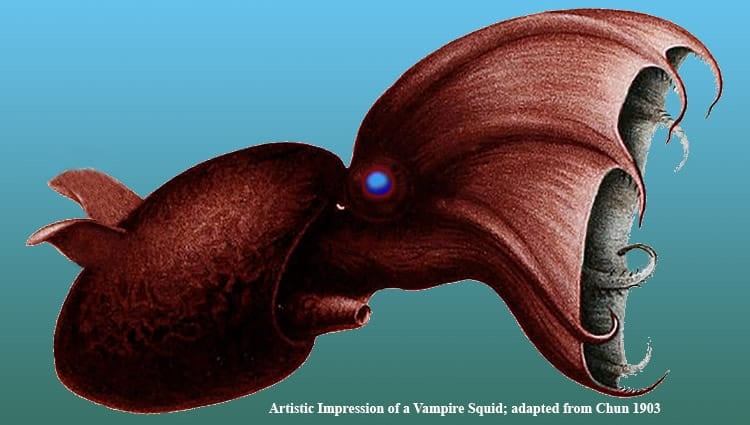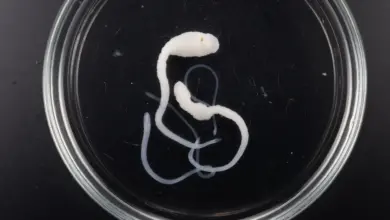Class Gastropoda 101: Facts & Records About Gastropods
Etymology of Gastropoda = from the ancient Greek – gaster = stomach and pous = foot – so “Stomach footed”.
Number of Gastropod Species:- Catalogue of Life: 2019 Annual Checklist = 53,461; Molluscabase = 67,356
Fossil Species:- Molluscabase:- 12,726
Condition of Typical Molluscan Characteristics:
- Radula (a rasping “tongue” with chitinous teeth) = Present
- Odontophore = (cartilage that supports the radula) = Present
- Large Complex Metanephridia = Present
- Broad Muscular Foot = Present
- Large Digestive Ceca = Present
- Visceral Mass = Present
- Shell = Present in many, absent in some and internally vestigial in a few
- Habitat = Terrestrial, Marine and Freshwater.
- Reproduction (Genders) = Dioecious in many marine species, hermaphroditic in many terrestrial species.
Introduction to the Class Gastropoda
The word snail is used for tens of thousands of animal species in the gastropoda. Snail is not a scientific term, but a general everyday word.
There are three words used as collective nouns for snails; rout, walk or escargatoire. My personal favourite is a walk… Imagine:
“I was down by the river the other day and I came across a walk of snails.”
The Gastropoda are molluscs, invertebrate animals with a well developed head which has eyes and tentacles, a large muscular foot and a visceral mass.
Gastropods possess a single, usually coiled. shell. However in some groups of terrestrial slugs the shell is greatly reduced and sometimes internal, and so effectively functionless. Furthemore, in such gastropods as the nudibranchs, the shell is lost (usually before reaching maturity) this is also the case in some extreme endoparasites.
Gastropods are by far the most numerous, widespread and successful of all the mollusca. They are the only group of molluscs to occupy all three earth surface habitats, fresh water, marine and terrestrial. They are diverse in both their form and their ecology. Just as importantly, they are often beautiful and quite cute.
Most species are free living and active. Some are more sedentary, such as the limpets and some live buried in the sea floor. Finally quite a few species have evolved into parasites.
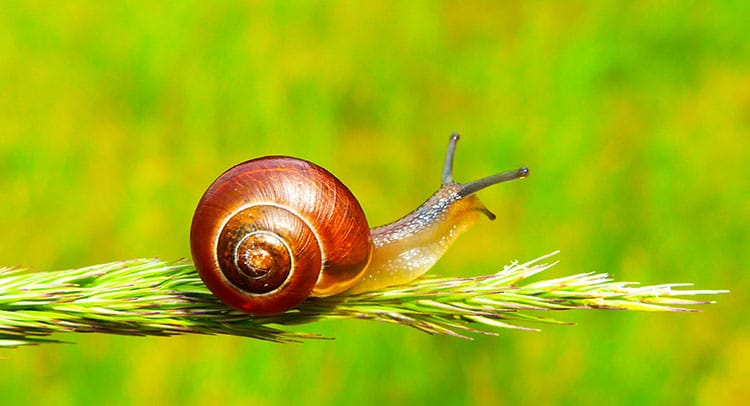
Basic Biology of the Gastropoda
The basic gastropod body can be divided into two sections, the head-foot and the visceral mass. The head-foot is the part you see most easily in slugs and snails. It is a muscular organ covered in cilia and rich in mucous cells, which the mollusc uses to move around. It normally tapers to a tail at one end and has a head incorporated in the front.
The head includes a mouth, eyes and tentacles – the last two may be much reduced or even absent. In those species with shells, the head-foot can be drawn into the shell.
The rest of the body is the visceral mass. This is entirely non-muscular and contains the organs of digestion and reproduction. It includes the gonads, the kidney, the heart. the stomach, the intestines and the digestive diverticulum.
Attached to the dorsal surface of the visceral mass is the mantle. In some literature the mantle may be called the skirt or pallium. The mantle may hang freely down the sides of the visceral mass. There is a space between the mantle and the viseral mass. This space is greatest towards the rear of the animal, where it is called the mantle cavity or the pallial cavity. The mantle cavity generally contains the gills or ctenidia (gill-like organs used for respiration).
Gastropod Torsion
Gastopods are distinguished from the rest of the mollusca by an anatomical process known as torsion. Gastropod Torsion is the process whereby where the visceral mass of the animal rotates 180° to one side during early development. This has several important physiological consequences.
- The anus ends up more or less above the head.
- The right side nephridium (kidney) and gonad are all lost.
- The right side ctenidium (gill) is also lost.
- Because of 3, the right side auricle of the heart is no longer needed and is therefore also lost.
Not all gastropods show the torsion as adults. Some, such as the Nudibranchs, become detorted during their larval development. However the evidence remains in the missing organs.
Some Gastropod Facts & Record Holders
The Largest Gastropod
The largest gastropod of all is a Marine Snail ‘The Australian Trumpet” Syrinx aruanus which can have a shell up to 772.0 mm (2 ft 6.39 in) in length. It is also probably the heaviest gastropod in the world today.
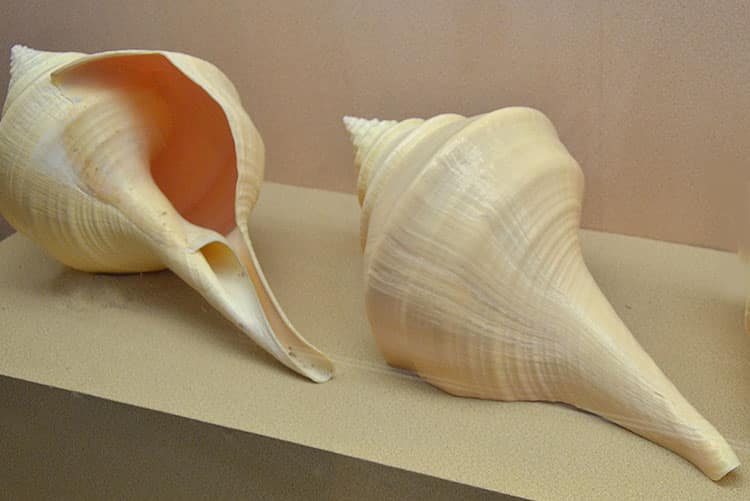
The Largest Terrestrial Gastropod is the Giant African Land Snail Achatina achatina with a shell length of 27.3 cm (10.75 in). The animal’s body can extend beyond the shell to a length of 39.3 cm (15.5 in) from snout to tail in the largest ever measured specimen.
The Smallest Gastropod
Determining the smallest gastropod is difficult because of the different shape of the shells. Some snails have relatively flat shells and it is easy to measure the largest dimension across the spiral plane. However other snails are more globular. The problem is that a snail from a globular shell may be heavier, or have a large body than a snail with a flat shell (when both have the same measurement across the spiral). Furthermore a globular or elongated shell my be large measured along the spiral plane rather than when measured across it.
Here are two very small snails:
- Terrestrial: Acmella nana – is a minute land snail from Borneo. It has a globular shaped shell. Mature specimens measure between 0.60 mm to 0.79 mm high.
- Marine: Ammonicera japonica – is a minute marine snail from Japan. It has a flattened shell. Mature specimens can measure as little as 0.55 mm across.
The Fastest Gastropod
In Europe, Snail Racing is hobby among certain enthusiasts. The snails raced are Common Garden Snails (Cornu aspersum – previously Helix aspersa). During races winners commonly reach speeds of between 0.1 and 0.2 cms per second. However in 1995 a snail called Archie set the world record averaging 0.235 cms per second.
This however is relatively slow compared to the carnivorous and predatory marine beach snail known as the Finger Plough Shell. Finger Plough Shells (Bullia digitalis) can move along a beach at speeds of 2.5 cms per second.
Even that tenfold increase isn’t sufficient to win the first prize. The Nudibranch, Clione limancia, a common Sea Slug with the uncommon name of Naked Sea Butterfly can achieve swimming speeds of 5.1 cms per second. This, as far as I know, makes it the fastest gastropod on Earth.
The Most Dangerous Gastropod
Cone snails are predatory marine snails with quite beautiful shells. But don’t let that beauty tempt you into picking up a live specimen. All cone shells possess venomous darts and some are lethal to human beings.
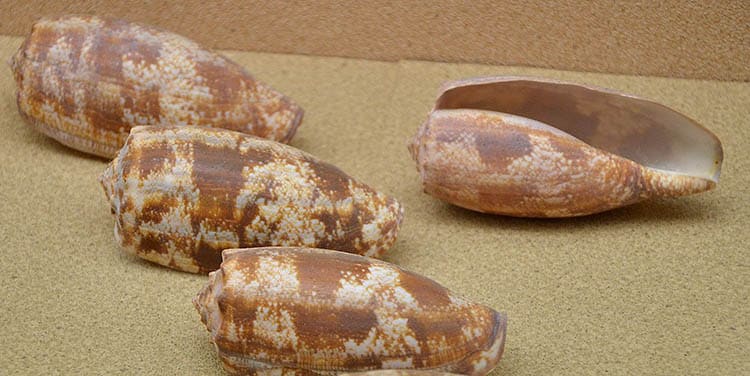
The most dangerous is the the Geography Cone (Conus geographus), which has been responsible for over thirty human deaths. The Geography Cone’s venom is a complex mix of hundreds of different toxins. These are delivered through a harpoon-like tooth evolved from the radula. This harpoon is expelled from an extendable proboscis at great speed.
There is no known antivenom for a cone snail venom.
The Deepest Living Gastropod
Many gastropods have evolved to live in deep water trenches, one such is Ringiculoides kurilensis. This is a deep water specialist marine snail that has been collected from depths as great as 6,575 meters in the Kuril Trench.
However the prize for deepest living gastropod goes to Macleaniella moskalevi which can be found at depths as great as 8,595 in the Puerto Rico Trench.
The Gastropod With the Strongest Teeth.
While the vast majority of gastropod teeth have not been studied for their tensile strength, the winner that we know of is the common European Limpet. Recent research has indicated values for tensile strength and elastic modulus respectively of 4.90 ± 1.90 and 120 ± 30 GPa.
These are extreme values and I included this category here because these values are greater than those recorded for spider silk; 4.5 and 10 GPa. This means that the teeth of these limpets are the hardest, toughest, material produced by any living organism in our natural world. In fact limpet teeth are comparable to the toughest man made materials such as high-performance Toray T1000G carbon fibres.
The Most Beautiful Gastropod
I will admit that there are some terrestrial snails with beautiful shells such as the Cuban painted snails (Polymita picta). Furthermore I could not deny the beauty of cowries or the wonderfully cute beauty of the Cymbal Bubble Snail (Haminoea cymbalum) from Hawaii and the Christmas Islands.
However for me there is no doubt that numerous nudibranchs are by far the most gorgeously beautiful of the gastropoda. Perhaps even the most beautiful animals on the planet. There beauty is so intense, and so varied, that I cannot chose an outright winner.
The Longest Lived Gastropod
This has proven to be a most difficult question to answer. Generally speaking, gastropods have short lifecycles with most species living for less than three years. A number of both marine and terrestrial species are know to live for up to ten years.
According to Wikipedia, the edible snail Helix pomatia commonly lives for 20 years and can live for 35. Again, according to Encyclopedia Britannica the Sororan Desert Snails can live for up to 50 years. I have not been able to find any scientific evidence to support either of these claims. Furthermore, in the case the case of the Sororan Desert Snail, the actual species is unknown.
The Strangest Gastropods
The class gastropoda is renowned for its diversity and choosing a strangest member is very subjective. Perhaps one of the strangest is the Carrier Snails. These marine snails are in the family Xenophoridae.
“Xeno” is the ancient Greek for foreigner and “phora” is the ancient Greek ‘to bear’ or ‘to carry’.
So the name of these snails claims they carry foreigners, and they do. Many members of this family, particularly in the genus Xenophora, cement the shells of other molluscs – particularly other gastropods – and small pieces of stone to their own shells. As they grow and develop their shell can acquire a whole host of other shells.
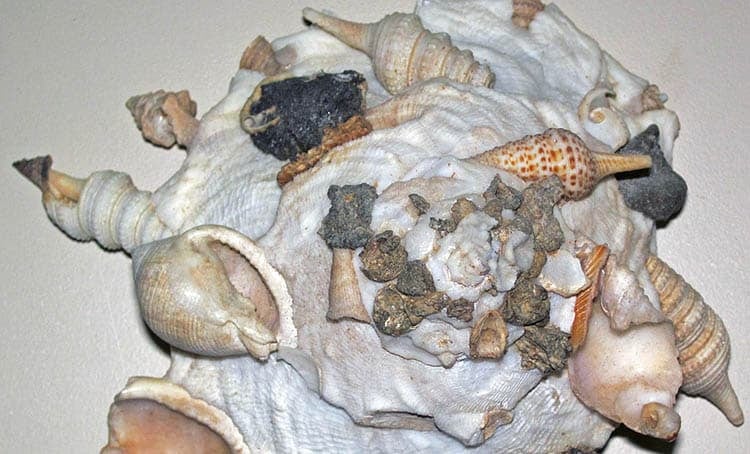
The Rarest Snail
As always there is no way of being sure. Even defining rare is difficult; is it the size of species population, the size of the area it inhabits or how quickly its population is declining. The IUCN claims there are 14 species that are now extinct in the wild and that now only exist in captive populations. These must surely be rare species.
On January 1st 2019, a snail nicknamed George died. He was the last know member of his species, Achatinella apexfulva. So with his death a species went extinct. George’s species came from Hawaii, he was a tree snail. George lived a long time in captivity, he was 14 years old when he died. Scientists put a lot of time in searching for a mate for George but they had no luck. What happened to George was a small tragedy in a world full of tragedy. Perhaps one day humanity will learn.
Without doubt the rarest marine snail, and the rarest marine snail shell, is that of the White-toothed Cowry (Cypraea leucodon). This attractive species from the Sulu Sea of the Philippines is only known from two specimens. One of these was found in the guts of a fish that was caught from the Sulu Sea in the 1960s.
On the Internet you can find claims that Cerion nanus from the Caman Islands is the world’s rarest snail. However its population has been shown to be larger than first suspected. Furthermore its habitat, while restricted, is not as small as some.
The Maitai Cave Snail
As far as we at the Earthlife Web can determine, Hadopyrgus ngataana is definitely a strong contender for the rarest crown. The Maitai Cave Snail is a cave dwelling snail with a very, very limited distribution (less than one hectare). It is a tiny snail, only 1.7 x 1.2 mm in size, think sugar grain. The species was only discovered in the 1970s, but not recognized as a separate species until 2001.
Hadopyrgus ngataana has only even been found in one cave pool in a stream at the entrance of Maitai Cave, in the Maitai River Valley on the South Island of New Zealand. Ngataana is the Maori word for slugs and snails. Like many other trogloditic (cave loving) species it is blind – eyeless, and has a crystal clear shell.
Scientists are worried about the Maitai Cave Snail because, not only is the entire species limited to a single small above ground pool, but the area is a popular beauty spot not far from a large city – a destination for picnickers and day trippers. Practically nothing is known about this snail, not what it eats, how long it lives, how it reproduces or how big the population actually is. However it has been recognized by the government and is now officially on New Zealand’s National Critically Endangered list.
The Most Common Snail
There seems little doubt in most people’s minds about this, though little is known about the distribution of many of the small marine species. Cornu aspersum (Cryptomphalus aspersus) commonly known as The Garden Snail now has a huge distribution. Naturally it occurs in much of Europe, from the UK to Greece and on into Asia Minor and south to Northern Africa (Morrocco to Egypt).
As an invasive species it has been introduced, sometimes deliberately, sometimes accidentally, to much of the rest of the Western world and beyond. Countries with expanding populations include Australia, New Zealand and North America, especially California but all the way from Washington down to Mexica. Further afield it is now also a recognized pest in Costa Rica, Haiti, The Canary Islands, Argentina, Chile, Hawaii and South Africa. All in all a very successful species, which is also quite edible.
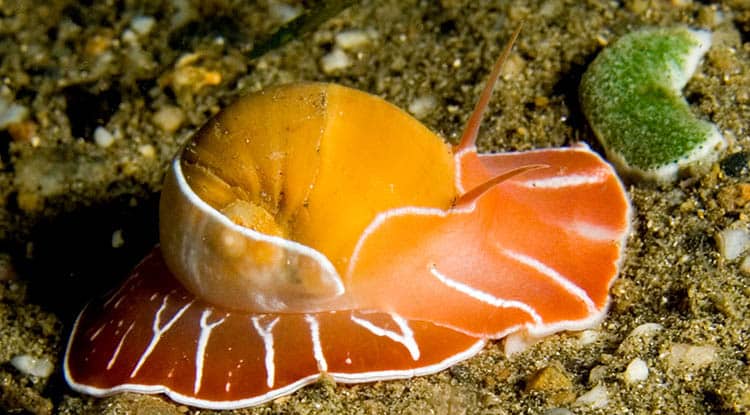
Basic Taxonomy of the Gastropoda
The taxonomy of the Gastropoda, like so much taxonomy today, especially of invertebrate groups, is in a mess. One of the main reasons for this is that the basis for taxonomy has been changing over the last two decades. Traditional taxonomy was morphologically based, the new taxonomy is based on molecular phylogenetics.
To bring a whole group up to date with the new taxonomy means re-examining huge amounts of museum material. When a group is as large as the gastropoda, with a minimum of 54,000 species, this is an awful lot of work. Inevitably the work proceeds on a piecemeal basis.
The end result will be good, but as the changes are unfolding the system gets a bit messy, especially at the higher levels of classification. Combine with this the fact that dozens, if not hundreds of new species of gastropod are being described each year (144 new species 4 new genera in 2019) and and you can understand this is a big problem.
The following higher classification of the Class Gastropoda is from Philippe Bouchet and Jean-Pierre Rocroi et. al. 2017. This paper lists 721 valid family names 67,000 species within the gastropoda.
A Final Note On Species Numbers
I have included above the total species counts from two different internationally respected and highly professional organisations, yet there is a great difference. Furthermore, according to Molluscabase (on the 9th of September 2020) there were: Marine Species 37,965, Freshwater Species 4,896, Terrestrial Species 24,657. If you add up these figures it is 67,518 or 162 species more than the same database lists for the whole of the Gastropoda.
I include this here not to make you distrust databases, but to show you how difficult it is to get exact results for questions about species diversity. When thousands of scientists all across the planet are working on and studying a group of animals, in dozens of different languages, publishing records in numerous different journals and books, it takes a lot of time and effort to keep up-dating and correcting all the records.
Please remember, unless you are actually a professional taxonomist the exact numbers are not important.
What is important is to understand how amazing these creatures are and how lucky we are to have been born on a planet with so much beauty on it. The IUCN (9-Sept-2020) lists 267 recently extinct species, plus 14 species that are extinct in the wild but maintained in captivity. Furthermore they list 598 species that are Critically Endangered. Let’s try and be a little less destructive of the world’s beauty in our living from now on.
Learn More About The Gastropoda
If you have found that gastropods are more interesting than you thought, or if (like me) you have always loved them, why not check out some of our other Gastropod pages:
For you to read now:
-
Gastropod Reproduction (Not everyone’s a promiscuous hermaphrodite)
-
Gastropod Anatomy (including Digestive System, Circulatory System and Respiration)
-
The Gastropod Radula (What is it? How does it work? How many teeth?)
-
The Gastropod Shell (Including how it is made and what is it made of)
-
The Gastropod Life Cycle (Growing up as a snail)
-
What Do Snails Eat? (Gastropod Diets)
-
Where Do Snails Live? (The Varied Lifestyles of Marine and Terrestrial Gastropods)
-
What Animals Eat Snails? (Gastropod Predators & Defences)
-
Snails in Art, Jewelry & Literature Throughout History
Image Credits:- Moon Snail Nick Hobgood; Syrinx aruanus and Conus geographus by Amada44; – license CC BY-SA 3.0; Cover Image Hypselodoris bullocki by Bernard Dupont; Carrier Snail by James St. John; – license CC BY 2.0 Photo of a Snail on Grass by Krzysztof Niewolny on Unsplash


